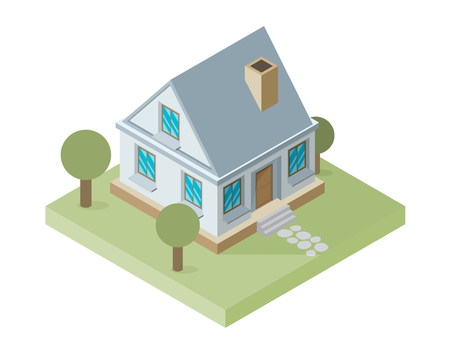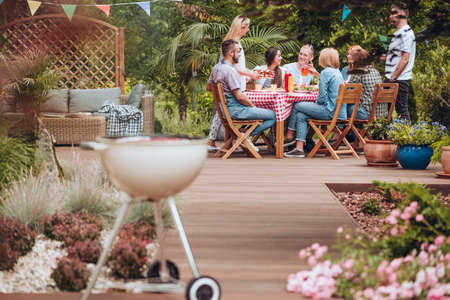Introduction to UK Outdoor Living Spaces
In recent years, British homeowners have developed a renewed passion for outdoor living, transforming gardens, patios, and decking areas into inviting extensions of the home. The unpredictable British weather is no longer a deterrent; instead, it has inspired creative solutions for year-round enjoyment. Patios and decking have grown in popularity, becoming key features in modern UK homes as families look to maximise their living space and embrace alfresco lifestyles. Whether it’s a quiet morning coffee spot or a vibrant social hub for entertaining friends, these outdoor spaces now play a central role in daily life across the country. This growing trend reflects both a desire for relaxation and a response to urban living where every inch of space counts, making patios and decking essential elements in creating functional and stylish British gardens.
Sustainable Materials and Eco-Friendly Choices
In 2025, sustainability is at the heart of patio and decking trends across the UK. British homeowners are increasingly prioritising eco-friendly materials when planning their outdoor spaces, reflecting a nationwide shift towards environmental responsibility. This year, both recycled products and home-grown resources are taking centre stage in garden design, shaping not only aesthetics but also the ethos behind each project.
The Appeal of Recycled Materials
Recycled composite decking boards and reclaimed paving stones have surged in popularity. These materials offer durability, low maintenance, and a significantly reduced carbon footprint compared to traditional options. More UK brands are now producing high-quality recycled decking that mimics the look of timber while being resistant to rot and insect damage. Homeowners appreciate that these choices help divert waste from landfills and contribute to a circular economy.
Embracing Home-Grown Resources
Alongside recycled products, there’s a growing trend for using locally sourced timber such as British larch or oak. These woods support local forestry and reduce transport emissions, making them an attractive option for those seeking authenticity and sustainability. With careful treatment, British hardwoods deliver both longevity and rustic charm—qualities increasingly sought after by discerning gardeners.
Eco-Friendly Trends at a Glance
| Material Type | Popular Examples | Main Benefits |
|---|---|---|
| Recycled Composites | Plastic & wood blend decking | Low maintenance, sustainable, durable |
| Locally Sourced Timber | British larch, oak, Douglas fir | Supports local industry, reduces carbon footprint, unique grain patterns |
| Reclaimed Stone/Brick | Yorkstone flags, Victorian bricks | Heritage appeal, waste reduction, robust finish |
The Green Shift in British Gardens
This collective move towards sustainable materials is shaping the look and feel of UK gardens in 2025. Eco-conscious patios and decks are now designed with permeable surfaces to aid drainage and encourage biodiversity. Rainwater harvesting systems and natural planting schemes often complement these choices, ensuring that the entire outdoor space works harmoniously with nature. As environmental awareness continues to grow among Britons, expect even more innovation in sustainable garden design throughout the coming year.

3. Garden Zoning and Multi-Functional Spaces
One of the standout patio and decking trends in the UK for 2025 is the creative use of garden zoning to maximise outdoor living potential. More Brits are moving away from single-use patios and decks, instead dividing their outdoor spaces into dedicated zones for dining, relaxation, and socialising. This thoughtful approach not only enhances functionality but also creates a seamless flow between different activities.
Dining Areas: Alfresco Appeal
With the British love for alfresco dining on the rise, homeowners are setting up designated dining zones complete with weatherproof tables, comfortable seating, and even built-in BBQs or pizza ovens. Whether it’s a formal dining set under a pergola or a cosy nook with bistro chairs, these areas make hosting summer lunches and evening get-togethers effortlessly stylish.
Relaxation Zones: Calm Corners
The demand for tranquil escapes within gardens has led to an increase in relaxation zones. From hammock corners shaded by trees to decked platforms adorned with plush outdoor sofas and throws, these spaces are designed to offer a retreat from daily stresses. Incorporating features like fire pits or water elements adds an extra layer of comfort and helps create a spa-like ambiance right at home.
Social Spaces: Gathering Made Easy
Socialising outdoors has become a cherished British pastime. Homeowners are carving out flexible social spaces on their patios and decks—think modular seating arrangements that can be easily reconfigured for drinks with friends or family celebrations. Integrated lighting, outdoor speakers, and even small bars are growing in popularity, transforming gardens into entertainment hubs whatever the weather.
Seamless Transitions Between Zones
The key to successful garden zoning lies in subtle transitions. Low planters, decorative screens, or changes in decking materials are cleverly used to define each area without interrupting the overall flow. This layered approach ensures that every corner of the patio or deck serves a purpose while maintaining a cohesive look throughout the garden.
A New Era of Outdoor Living
As British homeowners continue to invest in their outdoor spaces, garden zoning is set to remain a top trend in 2025—making patios and decking more adaptable, inviting, and perfectly tailored to modern lifestyles.
4. Blending Indoors and Outdoors
In 2025, UK homeowners are increasingly seeking to erase the boundaries between their interior living spaces and outdoor areas. This seamless transition is not just about aesthetic appeal—it’s also about enhancing lifestyle, entertaining possibilities, and even property value. Let’s explore the key trends that are driving this movement.
Bi-Fold Doors: Bringing in the Light
Bi-fold doors have become a staple in British homes looking to connect kitchens or lounges directly with patios or decking. These doors allow for wide, unobstructed openings, making it easy to step outside or let fresh air and natural light flood inside. The flexibility they offer is particularly well-suited to the UK’s variable climate, as homeowners can enjoy garden views even when the weather turns.
Outdoor Kitchens: Alfresco Living All Year Round
The rise of outdoor kitchens marks a significant shift in how Brits use their gardens. No longer just for summer barbecues, these spaces now feature weatherproof cabinetry, built-in grills, pizza ovens, and even sinks or fridges. An outdoor kitchen transforms a patio or deck into a true extension of the home—perfect for hosting friends or enjoying family meals whatever the season.
Weather-Resistant Furniture: Comfort Meets Durability
With the unpredictable British weather in mind, demand has surged for stylish yet durable outdoor furniture. Materials such as powder-coated aluminium, synthetic rattan, and treated hardwoods are popular choices. Many collections mirror indoor design trends in colour and comfort, helping create a cohesive look from lounge to lawn.
Key Features of Indoor-Outdoor Integration
| Feature | Description |
|---|---|
| Bi-Fold Doors | Create large openings; maximise natural light; improve access between home and garden. |
| Outdoor Kitchens | Include cooking appliances; weather-resistant storage; increase entertaining options. |
| Weather-Resistant Furniture | Blends indoor style with garden durability; withstands rain and temperature changes. |
The British Approach to Seamless Spaces
The UK’s approach is all about practicality paired with style. Whether it’s choosing UV-resistant fabrics for sofas or integrating subtle outdoor lighting for evening gatherings, every detail is considered. As we move through 2025, expect more homeowners to invest in these features—making the line between indoors and out beautifully blurred.
5. Naturalistic and Low-Maintenance Styles
In 2025, UK homeowners are gravitating towards patio and decking solutions that blend seamlessly with the natural environment while minimising upkeep. Naturalistic garden trends have gained significant traction, with many opting for wild planting schemes that evoke the untamed beauty of the British countryside. Rather than pristine lawns or highly manicured borders, spaces are now being designed to encourage native wildflowers, ornamental grasses, and pollinator-friendly plants. This approach not only supports local biodiversity but also requires less maintenance, aligning perfectly with busy modern lifestyles.
Composite Decking: The Go-To Low-Maintenance Choice
The demand for composite decking is at an all-time high across the UK. Unlike traditional timber, composite boards are engineered to resist fading, warping, and algae growth, making them ideal for the country’s unpredictable weather. Their realistic wood-grain finishes complement rustic and rural-inspired designs without the hassle of annual painting or staining. Homeowners appreciate how composite options provide a practical yet stylish foundation for outdoor living areas.
Channelling Countryside Charm
Paving choices are also reflecting this relaxed countryside aesthetic. Materials such as reclaimed stone, gravel paths, and clay pavers are increasingly popular for patios, lending authenticity and charm reminiscent of rural cottages. To soften hard landscaping, climbing plants like wisteria or honeysuckle are frequently introduced around pergolas and fences. Features such as wildlife ponds or log piles further enhance the sense of a garden in harmony with nature.
A Modern Take on Rustic Living
This shift towards naturalistic and low-maintenance design demonstrates a desire for outdoor spaces that feel welcoming and lived-in, rather than overly polished. As sustainability remains at the forefront of design decisions in 2025, these trends allow UK homeowners to enjoy beautiful patios and decks that require less intervention—leaving more time to relax and soak up their own slice of countryside tranquillity.
6. Tech and Lighting Innovations
As we look towards 2025, British patios and decking are being transformed by a wave of smart technology and eco-friendly lighting solutions. Homeowners are embracing integrated systems that make outdoor spaces not just more beautiful, but also comfortable and usable throughout the year. The rise of smart controls means you can now manage your patio lighting, heating, and even irrigation from your mobile device or a central home hub, fitting seamlessly with the UK’s love for convenience and efficiency.
Sustainable Lighting Solutions
Energy-efficient LED lights have become a staple for UK gardens, offering both cost savings and environmental benefits. Solar-powered path lights, motion-sensor wall lamps, and dimmable fairy lights help create atmosphere while reducing energy consumption. Many Brits are opting for subtle uplighting to highlight planting schemes or architectural features, ensuring their patios remain welcoming after dark without contributing to light pollution.
Smart Heating Options
The unpredictable British weather means that heating solutions are essential for maximising the use of outdoor spaces. Contemporary trends include sleek infrared heaters mounted discreetly on pergolas or walls, as well as portable fire pits that double as stylish focal points. These options provide warmth without overpowering smaller gardens and can be controlled remotely—ideal for quickly adapting to a sudden chill in the air.
Tech Integration for Year-Round Use
Voice-activated assistants and app-controlled setups allow homeowners to pre-set their preferred lighting levels or switch on heaters before stepping outside. This integration makes it easier than ever to entertain or relax outdoors, regardless of the season. As sustainability remains a core value in the UK, many of these new technologies focus on reducing carbon footprints while improving functionality.
The Future of Outdoor Living in Britain
In summary, the latest tech and lighting innovations are reshaping what’s possible for UK patios and decking. With smart controls, sustainable lighting, and efficient heating, outdoor living is no longer limited by time or temperature—making these spaces true extensions of the home all year round.
7. Summary and Future Outlook
The evolving landscape of patio and decking trends across the UK in 2025 highlights a clear shift towards sustainable practices, innovative materials, and versatile design concepts that respond to both aesthetic preferences and practical needs. As British homeowners continue to invest in their outdoor spaces, we see a growing appreciation for eco-friendly timber alternatives, low-maintenance composite decking, and creative layouts that blend seamlessly with garden landscapes. The popularity of multifunctional features—such as built-in seating, integrated lighting, and weatherproof coverings—suggests that patios and decks are no longer just seasonal havens but year-round extensions of the home.
Looking forward, the future of British outdoor living is set to embrace even more personalisation and technological integration. With climate considerations top of mind, expect further advancements in water-permeable surfaces, energy-efficient lighting, and smart outdoor heating solutions tailored for unpredictable UK weather. As garden rooms and al fresco kitchens become household staples, designs will increasingly focus on comfort, connectivity, and sustainability. Ultimately, these trends indicate a collective move towards creating inviting, functional spaces that reflect both contemporary lifestyles and timeless British sensibilities—ensuring that outdoor living remains at the heart of home life for years to come.


